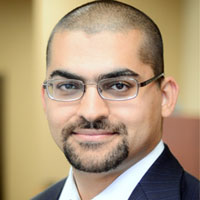Say 'No' to Hair Plugs with Advanced Hair Replacement Surgery
Hair transplant surgeries have transformed over the past few years to offer natural and permanent hair fixing solutions to people suffering from different types of hair loss.
According to Gregory Pistone, M.D., F.A.A.D., a dermatologist with Advanced Dermatology PC, hair replacements no longer leave you with large, round, “plugs” that look worse than balding head. Pistone is referring to advanced hair transplant technologies that give truly natural looking hair to patients.
However, not all hair transplant centers are equipped with the knowledge and expertise of advanced hair transplant systems. Surgical hair restoration is an unregulated field, meaning any licensed physician can perform it without special training or accreditation. Customers should be wary of the “snake oil salesman” out there, who want to sell cheap products and services, according to Pistone.
“Hair loss can be traumatic,” Dr. Pistone said, “and people will try almost anything to remedy it.” Many patients can get good results with FDA-approved drugs—Minoxidil (Rogaine) and Finasteride (Propecia)—but these meds don’t work for everyone. And until recently, those patients had two choices: live with the loss or take a big risk on surgery.”
Thanks to modern techniques like ARTAS hair restoration systems, patients can get natural hair transplants free of the old “plugs.” The new follicular unit extraction (FUE) technology applied in modern techniques extracts each graft of individual follicular units, as opposed to the grafts in strip method that contained as many as 15 follicles.
According to Dr. Pistone, patients must conduct a self assessment to determine whether they are good candidates for the surgery. The best candidates for hair transplant are men with male pattern baldness, also known as androgenic alopecia, or people (both men and women) who have lost their hair due to trauma or burns.
The next concern should be the density of hair that needs to be replaced. This depends on the overall hair density on your scalp, and also the nature of the hair stand -- coarse or fine and curly or straight. Hair with greater density requires fewer grafts than thinner hair. Likewise, coarse hair covers more than fine hair and curly hair covers more than straight hair. Hair color also is a matter of concern. The closer your hair color is to your skin color, the better. If there is greater contrast, you will require more hair to be transplanted. Another factor that determines hair transplant density is the pattern and shape of the hair line and your future hair styling plans.
Depending on the requirements, it may take a few sessions spaced months or even years apart, but most patients can get most of the results they want in one or two.
Patients must also be careful while choosing the service from a physician. They should check the background of their service and speak with former patients -- ideally people with hair and skin similar to yours to ensure that the surgeon is capable of meeting your requirements.
Hairfear
Frequently asked questions about hair transplant procedures
How much does a hair transplant cost?
Hair transplants can vary in price based off of the area in the world that you are interested in getting a hair transplant as well as the size of the area where you may need a hair transplant. Experienced doctors in the United States will often charge some of the highest prices for a hair transplant worldwide and this is why so many travelers make the move to other parts the world like Turkey, India, Thailand, Mexico...etc for their hair transplants.
Will a hair transplant hurt?
Although hair transplants may look like a particularly
unpleasant or painful experience is actually very little discomfort involved
with the surgery itself. Hair transplants are always done under an anesthetic so there's absolutely zero pain during the treatment itself. Many people actually relate the process as being very similar to going to the dentist for filling or root canal. Mild pain can persist over the course of postop treatment but he generally just resumes for a few days.
Who can deliver the best surgery?
It's usually best to consider working with surgeons who have and IAHRS certification or international alliance of hair restoration surgeons recognition. IAHRS can often deliver recommendations for the best surgeons in each particular area.
Is this scarring noticeable?
Any type of hair transplant will require the use of incisions throughout the scalp. There can also sometimes be a small scar from the donor area towards the back of the scalp. Asking to look at photos of the surgeon's previous work will help you to see roughly how bad the scarring could be. In most cases an experienced professional can limit the look of scarring and noticeable marks from the surgery.
How long does it take for the hair to grow?
In most cases hair growth will start within eight months and you can start to see a full effect from the hair transplant after a full year. The initial signs of growth can usually start between 3 to 4 months after the surgery.
Are the results permanent?
The hair follicles that are transplanted are generally the ones which are genetically resistant against the symptoms of baldness. As long as you receive hair loss treatment later in your life after the symptoms of balding have started to subside, you can have a better chance at permanent results.
While everyone know you've had surgery?
If you want to limit the chance that people may find out about your surgery it's important to give at least three weeks of healing as the surgical area will be affected and red just after surgery. After around a month of healing it can look far less noticeable. You could consider wearing a hat while time passes or opting for some extra time off if possible.
How long should I rest after surgery?
It's recommended to rest for at least a few days after surgery so that your body can recover. Trenton to over exert yourself and limit sexual activity, running in the gym for around 10 days after surgery.
Is it possible to lose more hair as a result of surgery?
There is always a chance of shock loss which happens when the hair is weak and miniaturizing after the surgery. As long as the surgeon is choosing the correct hair follicles and performing the surgery well it's possible to minimize the chance of this happening however.
Will I need another hair transplant?
The need for another transplant really depends on the individual. With a solid foundation surgery and working to potentially bolster results with drug therapy, you can improve the stability of the hair that was transplanted as well as prevent further loss. Getting a hair transplant early
on in your 20s or early on in life could lead to needing long-term transplants as hair loss can be progressive.







